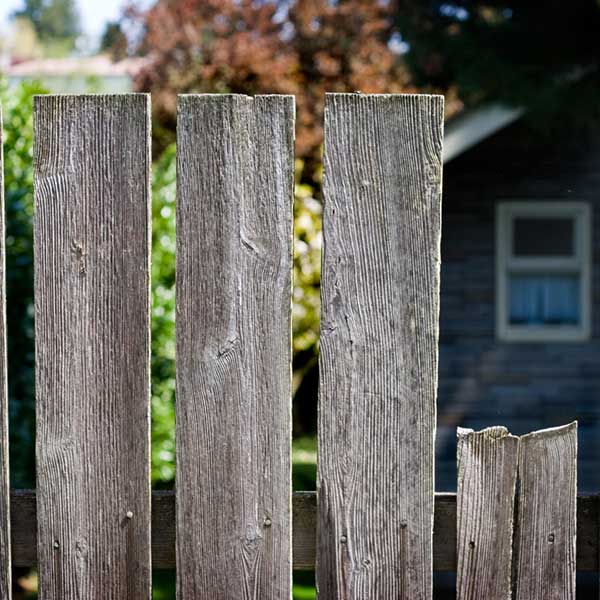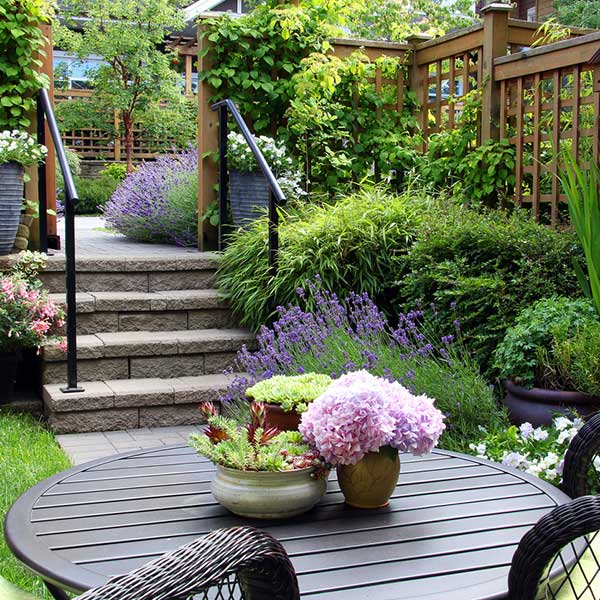When you chose your new home, you probably looked very carefully at the size, location and décor in the house and took into account the size of the garden. In your mind, you may have made plans to decorate, renovate or change the purpose of some of the rooms in your new home, and thought that you would then get around to sorting out the garden.
Although your new garden was probably low on your ‘to do’ list when you bought the house, the warmer weather may now be making you revise your plans a little. You might be feeling very tempted to just blitz the garden now, lay some turf and get the deckchairs out so that you can enjoy the outdoors whilst the sun’s out. Doing so, though, could leave you with a featureless garden that will cost more to restore in the long term than it would cost now to get it right in the first place. A little patience now can reap huge rewards!
A step-by-step approach is vital for preserving the hard work that will undoubtedly have been put in by previous owners, whilst also bringing a fresh and tidy new appearance that is all of your own.
In essence, we hope to convince you that completely renovating your garden before you have seen what it has to offer throughout the year could be tantamount to throwing out the baby with the bathwater – so do enough now to make your garden habitable, but preserve it in its current state as far as possible to keep your options open for the longer-term. In the meantime, there are some basic tasks you can do in the short-to-medium term that will pay dividends later on.
Planning

Don’t be tempted to skip this stage! This is where you get to design the garden you want in the long-term before deciding what work can and should be done in the short-term. Draw a plan of your garden, to scale, and try to break it down into distinct areas. Much of your final design will depend on your priorities: do you want a lawn? A wildflower area? Shrubs and trees? A patio? Bear in mind that the more paved areas you have, the less drainage there will be, which could lead to boggy areas developing and an increased risk of flooding. Work systematically, one area at a time and the project will be far less daunting.
Clearing

Depending on the state of the garden you have bought, it may be obvious that some areas need clearing: brambles spread and set down roots everywhere, making them difficult to remove and leaving precious little room for other plants and flowers. Brambles can be cleared by chopping them down to stumps and then painstakingly digging out the roots by hand. You could hire a rotavator to make this job a little easier on your back: but beware that there may be bulbs hidden beneath the soil that will be destroyed if you use the rotavator.
Carefully spot-treat nettles, dandelions and other common weeds, but if you are doing this in borders then make sure you choose weedkiller that will not affect surrounding growth – otherwise, use a trowel. Take your time. Break the garden into small areas to make this a less daunting task.
Once weeds have been cleared from an area, you can prepare it for what you want to use it for: put down lawn seed or cover it with matting until you are ready to plant (e.g. in a border).
Pruning

Prune everything back – bushes, trees, shrubs. You’ll open up space and give light to areas that might not have had it for some time, allowing dormant plants to emerge. Your garden will immediately seem more spacious and better kempt.
Get to know your garden

Testing the PH of your soil can be quick and cheap, and it is well worth the effort. You can also see whether your soil is heavy with soil or sandy by holding it in your hands: if it is clay it will clump together in a ball. You will know which plants will thrive in which areas of your garden simply by checking the labels in garden centre and comparing them to your knowledge of the soil you have.
Lawn

If you want a lawn and have only one place to install it, you may as well start now. Clear the area of weeds, above, and turn over the topsoil or add more if your garden is rocky and hard (the topsoil will aid drainage). Then either sprinkle seeds (which will grow well in spring) or lay down turf if you are in a hurry to get your garden at least partly-habitable without delay.
Borders and trees

Any borders should be left alone for as long as you can – certainly for the first year. This will enable you to see exactly what is there, and what will flower when. Consider taking a photo of your garden in each season and then comparing these when finalising the design of your garden. Feel free to clear weeds if you are certain of what they are – remember that weeds are only plants that grow where you don’t want them to, and can be very pretty if left to flower. Wildflower gardens are very fashionable at the moment because of general awareness of the need to help our bees to flourish, so don’t be too quick to do away with anything that you don’t immediately recognise.
Once you have seen what you have to work with throughout the year, you can tweak your original plans to factor in any mature trees and shrubs or bulbs that you know will make an appearance each year.
Check your boundaries

If your garden has been neglected in the past, boundary fences and walls may need a bit of care. Check the paperwork of your house purchase to see who is responsible for maintaining joint boundaries and talk to your neighbours before beginning any major changes to keep the peace.
Have patience

Your garden won’t be transformed overnight – see it as a long-term project that you can work on throughout the year. Over time you will create a space that will bring considerable pleasure and even add value to your property.
*****
Discover more
home improvement articles on Safestore’s
blog where you’ll find a range of topics; from renovation tips to space saving ideas and more. Or, if you require storage to free up space we have a variety of self storage facilities located in over 100 locations – find your
nearest store for a quote today.